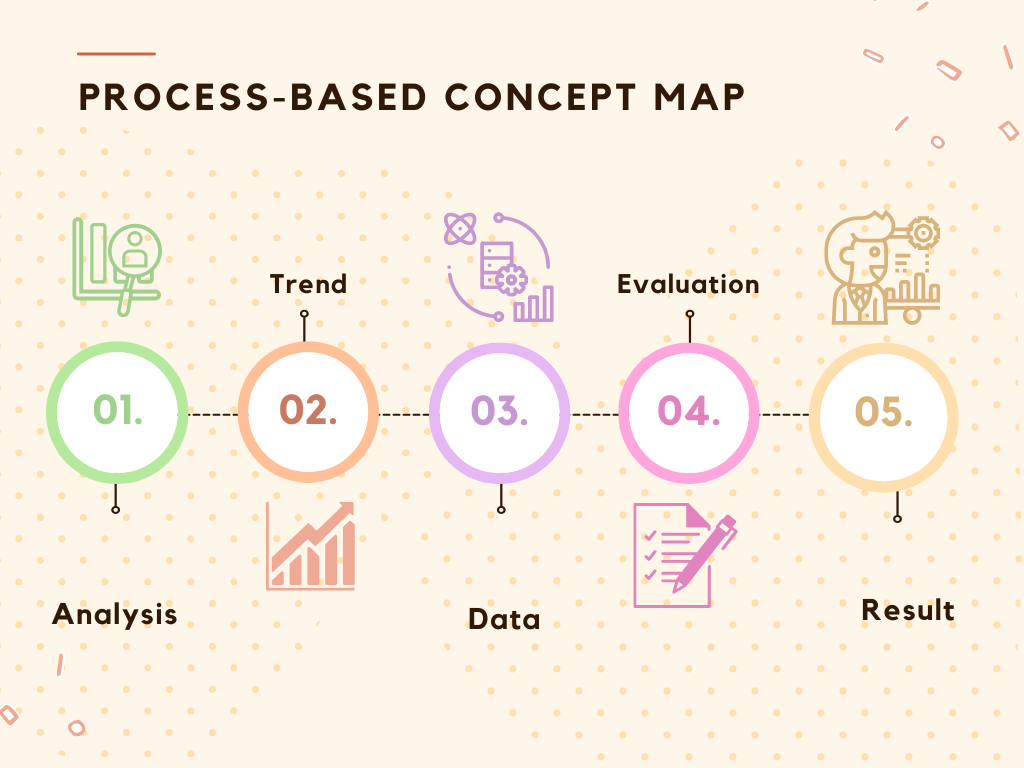
Hoe / Student Tasks / Process-Based Concept Mapping Task
PROCESS-BASED CONCEPT MAPPING TASK
In a process-based concept mapping task for interdisciplinary education, students are asked to visually represent a problem-solving or research process or approach relevant to an interdisciplinary project. Such maps can help students align their practices and develop an integrative strategy.

This task is most suitable for:
Interactions
Mixed (interdisciplinary) groups
Degree of Integration
Multidisciplinary or interdisciplinary
Problem structure
Structured or open-ended problems
Skill targets
Meta-cognitive, interdisciplinary problem-solving
- Metacognitive Skills (6/7)
- Interdisciplinary Problem Solving Skills (5/7)
- Team Skills (2/9)
What are Concept-Based Concept Mapping Tasks?
In a process map students primarily represent input-output relations which govern how a solution is typically or could be solved. These relations show steps in a research or problem solving process. Input in a chain can be goals and values, data, methods, bodies of knowledge. Outputs can be similarly, data, knowledge, designs etc. Outputs typically form new inputs. Links may describe various actions such as “combines”, “corrects”, “validate”, etc . Chains may involve feedback elements in case sub-processes may need to be re-performed in order to reach an optimal outcome. Student can create these maps directly through interviews with collaborators, experts, or through their own literature research.
Process-based mapping integration can be seen as broader approach over knowledge-based mapping alone, by going beyond knowledge elements which might figure in an interdisciplinary approach to look at knowledge generation and problem-solving as a whole.
Ready-made Resources
Universal tool usable for students & researchers to map out relationships between disciplines and planning.
Potential Uses
-
Communicating Disciplinary Processes
Students map out the structure of a relevant research/problem-solving approach (belonging to a discipline or field) of their own at the beginning of a project in order to facilitate cross-disciplinary communication with group members.
-
Developing Own Disciplinary Knowledge
Students map out the process structure at the beginning and end of a program in order to illustrate development in their own “reflective” understanding through interdisciplinary interaction.
-
Integrating Approaches
Students maps out a schema for process integration illustrating links between different processes; i.e. how tasks will be organized, how information will be transferred between fields and so on. They do this at the outset to facilitate and plan integration; they do this at the end to demonstrate interdisciplinary engagement and reflect on it.
Further Reading
Description of paper by Borrego et al.:
Borrego, M., Newswander, C. B., McNair, L. D., McGinnis, S., & Paretti, M. C. (2009). Using Concept Maps to Assess Interdisciplinary Integration of Green Engineering Knowledge. Advances in Engineering Education, 1(3), n3.
Description of paper by Besterfield-Sacre et al.:
Besterfield-Sacre, M., Gerchak, J., Lyons, M.R., Shuman, L.J. and Wolfe, H. (2004), Scoring Concept Maps: An Integrated Rubric for Assessing Engineering Education. Journal of Engineering Education, 93: 105-115.
